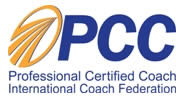Building Your Strategic Thinking Skills: 3 Key Tips
Business leaders often want people to think more strategically but unless strategic thinking is really understood from a practical perspective, it is not likely to blossom. When you think strategically, you look at the world differently. It’s not just an “in and out” business function.
To cultivate your strategic thinking skills, follow these three tips:
First understand the context of your thinking. Is it about the industry, a specific business direction, a problem to solve?
Second, Look at how you evaluate the situation. Assure you examine the pros and cons of the situation, your assumptions, and identify patterns that tell a story. It is helpful to break down the situation from various windows: you can begin with the functions within the company that the situation affects, such as finance, operations, marketing, and people. Of course, any situation in a business context must be looked at from a customer perspective. Without that, you can certainly go down a path to nowhere.
Third, to add a creative slant to your thinking, consider using a creativity tool, such as SCAMPER, developed by Bob Eberle, an education administrator and author. SCAMPER is a tool to help evaluate a product, service or system and it can be an excellent strategic thinking and problem-solving tool. SCAMPER stands for:
- Substitute.
- Combine.
- Adapt.
- Modify.
- Put to another use.
- Eliminate.
- Reverse.
This tool is best used when you ask questions about an existing situation so that you can consider various perspectives. If you were looking at a process in the business that is causing bottlenecks try these questions:
- How can this process be substituted with something else?
- Can I combine the process with another one to make it more efficient?
- In what ways can the process be adapted to make it more valuable?
- How can the process be modified?
- Can the process be put to another use?
- What can I eliminate in the process?
- What would happen if I reversed something within the process?
You don’t have to use every facet of the acronym. You may find that one or two facets help your thinking more, based on the situation. I find that having a structure to start with makes a big difference when looking at something differently, and getting my strategic thinking juices flowing.
About the author:
Diane Allen, PCC is a professional certified coach, leadership development consultant and founder of the Strategic Leadership Academy (www.strategicleadershipacademy.com). She has spent the past twelve years helping senior leaders and middle managers build success by building their personal and organizational leadership skills. For a complimentary Strategic Thinking Self Assessment, please send an email to: info@strategicleadershipacademy.com and put “Strategic Thinking Assessment” in the subject line.





Leave a Reply